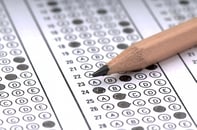Published on
Authentic Learning: Creating Meaning in the Higher Ed Classroom

Over the last several years, authentic learning has become a buzzword in the higher education community. It’s important for us to understand what authentic learning is and to recognize that educational benefits that can be reaped from this type of learning.
At its core, authentic learning is not a form of experimental education or a way to water down the curriculum. It’s a constructivist approach of instruction that promotes active learning in students by connecting learning to real-world issues, scenarios and contexts that are meaningful to the learner. There are various types of authentic learning you’re probably already aware of such as inquiry-based, project-based and simulation-based learning. These forms of learning often take the form of creation: student-developed media, gathering research data, developing arguments for student debates or learning portfolios are just a few of the activities used in authentic learning.
Looking past the jargon, there are many ways in which authentic learning is already taking place in the college classroom. It can be as simple as allowing students to apply course readings to a scenario related to the subject matter. A specific example is students working in a team to create a business plan for a company in a business course. Similarly, students in a systems analysis class may work with the bursar’s office to document data flows to identify inefficiencies. In the humanities, a history professor may work with a local museum to have his or her students develop content for an upcoming exhibit or invite special groups in to view poster sessions on the students’ historical research.
Each of these examples contain one common element: relevance. When students find relevance in their learning, they can become more motivated to learn, develop naturally arising inquiry skills and become more immersed in with working the content. Just think, what will have more impact on students: hearing a lecture and taking notes or leading the discussion on the topic? One perspective on authentic learning is to think of it as integrating elements of apprenticeship in learning process. Some examples include nursing students who complete practicums or pre-service teachers who practice pedagogy through student teaching. In both contexts, their learning is embedded into solving real-world problems. While it may not be possible to provide students in every course with this type of hands-on experience, there are ways to adjust traditional lectures, quizzes and assignments to make them more relevant to learners while ensuring the fundamental learning that needs to take place isn’t lost.
The concept of authentic learning takes time to absorb. It should not be haphazardly integrated; doing so would diminish the purpose of making learning experiences authentic in the first place. However, the beauty of authentic learning is that it can be incorporated into existing courses incrementally. Just altering one assignment can make a huge difference in the way students learn.
In the coming months, we will continue the discussion of authentic learning in context of these learning activities:
- Mastery Quizzes and/or Exams
- Discussion Forums
- Portfolios
- Video Creation
- Student Debates
- Research Papers
- Case Study Analysis
- Reflective Writing
This is the first in a series of articles by Gilliard-Cook and West discussing different facets of authentic learning. If you would like to subscribe to receive reminders about future posts, please click below.
Next installment coming soon
Author Perspective: Educator



